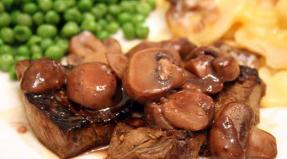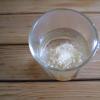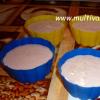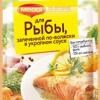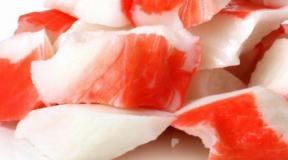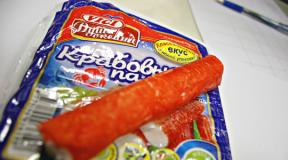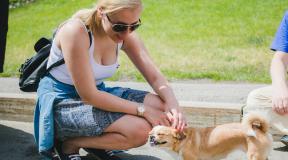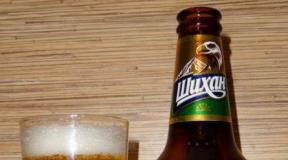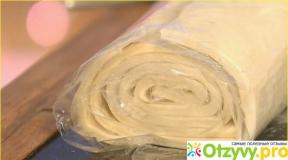What you need to cook Easter cake. The best Easter cakes recipes
Each holiday has traditional dishes. It is difficult to imagine the New Year's menu without Olivier, and on March 8 - without the Mimosa salad. Likewise, the Easter table is traditionally decorated with colored eggs, Easter cake and cottage cheese Easter. A good housewife will never ask where to buy Easter cake. She herself will be happy to tell you how to bake an Easter cake, but in more than one way.
A bit of history
Easter, like any other holiday, has its own story, which tells about the origin of its symbols and explains their meaning. Kulich is a round shaped fancy bread that decorates the Easter table. It was baked exactly round, because the shroud of Jesus Christ had a similar shape. The cake must certainly be rich, because according to legend, before the death of Jesus, he and his disciples ate unleavened bread, and after the miraculous resurrection they began to eat yeast bread (leavened). Since then, it has become a custom to make the dough for the cake rich.

If you are going to cook Easter cake with your own hands, take note of a few tips:
- butter should not be hard, then the cake will be soft and tender;
- butter should soften itself at room temperature, and not when heated;
- you can use paper molds made specifically for baking cakes;
- you can use a tin can as a form. But in this case, it must be lined with oiled baking paper;
- baking paper can be replaced with the usual paper used in offices. But it must be properly lubricated with oil;
- so that the dough does not stick to your hands, moisten them with water or vegetable oil;
- The readiness of the cake is checked with a splinter or a thin skewer, which is stuck into the cake. If it is dry, the cake is ready;

Easter cake traditional
- 1 kg of wheat flour;
- 6 eggs;
- 1.5 cups of milk;
- 300 gr. margarine (you can use butter);
- 1.5 cups of sugar;
- 40 gr. yeast;
- dried fruits and nuts (150 gr. raisins, 50 gr. candied fruits and almonds).
- 0.5 bag of vanilla sugar;
- salt;
Preparation:
- Heat the milk slightly, dilute the yeast in it.
- Add half of the specified flour. Stir. The dough is ready.
- Cover the dishes with dough with a towel and put in a warm place.
- The dough should be left to rise until its volume doubles.
- Separate the yolks and whites. Beat the yolks with vanilla and sugar, beat the butter.
- Add salt, yolks and butter to the dough. Mix everything.
- Beat the whites until a thick elastic foam. Add them to the dough.
- Add the remaining flour. The resulting dough should be free to lag behind the walls of the dish. It should not be too cool, well mixed.
- Cover the dough again and leave in a warm place until it doubles in size.
- Rinse the raisins, dry, roll in flour. Cut candied fruits into squares. Peel and chop the nuts. Add dried fruits and nuts to the dough that has come up.
- Prepare a mold (with a round bottom!): Line the bottom with oiled baking paper, grease the walls with butter and sprinkle with flour. Fill out the form 1/3 full of dough.
- Leave the dough to rise. It will be ready to go to the oven when it has risen to halfway through the mold.
- The oven should not be too hot. Leave the form in it for 50 minutes to 1 hour. Turn the pan gently as it bakes. If the top is browning early, cover it with paper soaked in water to prevent it from burning.
Decorate the finished cake with chocolate, candied fruits or nuts.

Quick cake
Many housewives, especially those employed at work or with small children, are worried about how to bake cakes for Easter with the least amount of time. The recipe below is easy to prepare and saves energy.
You will need:
- 1 glass of milk;
- 4 eggs;
- 1 tbsp. l. dry yeast (or 50 gr. fresh);
- 1 cup of sugar;
- 2 tbsp. l. vegetable oil;
- 100 g butter;
- 3 cups flour;
- vanillin;
- raisins, candied fruits.
Preparation:


- Heat the milk.
- Pour yeast and sugar into warm milk (only 1 tablespoon). Stir and leave for 15 minutes to make friends.
- Whisk eggs with remaining sugar and vanilla.
- Melt the butter and add it to the dough. Add vegetable oil, yeast and stir well.


- Add washed and dried raisins and candied fruits.
- Stir in the sifted flour gradually. The dough should come out pouring.
- Divide the dough into tins. It will rise, so the dough should take up no more than 1/3 of the mold.
- Leave the dough in the molds for 3-4 hours - during this time you can get busy.


- Place the molds in a hot oven (t = 180 degrees). Bake the cake until tender.
- Decorate the finished cake with icing and pastry beads.

Kulich without yeast and eggs
There are a lot of recipes on how to bake a delicious cake. It turns out that it can be made without yeast, milk and eggs.
You will need:
- 240 gr. flour;
- 2 tsp baking powder;
- 0.5 cups brown sugar;
- 1 banana;
- 40 ml juice (pineapple);
- 180 ml of water;
- 50 gr. raisins;
- salt;
- 3 tbsp. l. vegetable oil.
Preparation:
- Mash the banana to make a puree.
- Add oil, water, juice. Stir.
- Add salt (a pinch) and baking powder.
- Gradually sift the flour into the dough, stirring constantly.
- Knead the stringy dough.
- Fill the molds with them so that the dough takes up 3/4 of the mold.
- Bake the cake in an oven preheated to 200 degrees for about 50 minutes. The time depends on the oven.
- The finished cake must be removed from the mold when it cools down. Decorate it with icing and other decor.

The beauty of self-cooking Easter cake is that homemade Easter cake can be prepared not only according to the traditional recipe, but also using, for example, sour cream.
You will need:
- 200 gr. sour cream;
- 1 tsp dry yeast (or 25 g fresh);
- 170 ml of milk;
- 50 gr. butter;
- 150 g Sahara;
- 650-700 gr. flour;
- 3 eggs;
- 2-3 st. l. cognac or rum;
- 50 gr. raisins;
- sprinkling nuts;
- vanillin.
Preparation:
- Pour rum or cognac over the raisins.
- Dissolve yeast with some warm milk - pour 2 tbsp. l. milk, they will come in handy later.
- Separate the white from the yolk in one egg. Beat two eggs and the protein of the third with sugar and sour cream.
- Combine everything in one bowl, stir, salt and gradually add flour.
- The dough should be soft and slightly sticky. Cover it with a towel and let it sit for half an hour.
- After half an hour, add soft butter to the dough, stir. Cover again with a towel and let sit for an hour and a half to two hours.
- Knead the dough lightly and add the squeezed raisins. Knead the dough so that the raisins are evenly distributed throughout the dough.
- Divide the dough into the tins and leave until it has doubled in size.
- Mix the yolk with 2 tbsp. l. milk and brush the top of the cake with the mixture. Chop the nuts and sprinkle them on the cake.
- Place in the oven (t = 200 degrees) for 30 minutes until cooked.

Decorations help make the cake truly festive: icing, marmalade, colorful confectionery beads, nuts, marzipan, candied fruits, figurines from fruits. Speaking of Easter cake, one immediately imagines a lush round bread with a white top. This is the frosting. The following recipe answers the question of how to make icing for cake.
You will need:
- 1 egg white;
- 100 g sugar (fine);
- salt (pinch).
Preparation:
- Cool the whites and beat with salt until a firm foam is obtained.
- Without stopping whisking, add sugar.
- Do not stop whisking for another 4 minutes after the sugar ends.
- When the cake has cooled slightly, apply the glaze to it and leave to solidify.
Do-it-yourself Easter dishes not only give a great taste and delight with a festive appearance, but also carry a positive charge, being filled with the feelings and good wishes of the hostess.
In 2018 we will celebrate Easter on April 8th. For this day, it is customary to paint eggs, cook Easter cottage cheese, and, of course, bake Easter cakes, decorating them with icing, flowers, mastic figurines and pastry sprinkles. Today we will show the most favorite and delicious recipes for Easter cake.
Every day the coming of the most important Christian holiday - the Day of Bright Easter, or Christ's Resurrection - is getting closer and closer. In 2018, we will celebrate it on April 8th. For this day, it is customary to paint eggs, cook Easter cottage cheese, and, of course, bake Easter cakes, decorating them with icing, flowers, mastic figurines and pastry sprinkles. Today we will show the most beloved and delicious recipes for Easter cake, proven over the years.

Belief says - if the cake came out lush and tasty, then peace and prosperity will reign in the house. They are certainly baked for the holiday, eaten by themselves and treated to their close relatives and friends. They flaunt in the center of the table, decorated with beautiful multi-colored powder, colored ribbons, pleasing to the eye and carry a certain cult meaning.
This iconic bread, like its church counterpart artos, is always baked from yeast dough. Such dough is alive, it breathes, and if you leave the leaven from it, you can bake a lot of breads, that is, you can actually bake them endlessly. That is, the cake is a symbol of Eternal Life, the very daily bread about which Jesus spoke.
In ancient times, housewives have been kneading dough since Thursday. Then there was no abundance of food, and the table, basically, was decorated only with Easter eggs and Easter cakes. Therefore, it took half a day to knead the dough. At night, the mass was infused near the stove. The next day the women were busy baking cakes. On Saturday, as a rule, ready-made bread was carried to church for illumination. On Easter Sunday, they remained soft and lush.
The yellow hue of the bread is provided by the egg yolks. The higher the quality of the egg, the more appetizing the crumb. Therefore, it is better to use homemade eggs with a bright orange yolk to prepare these pastries. You can also tint the dough by adding a little turmeric (for 500 grams of flour, it is enough to put 0.5 teaspoon of spices).

Easter cake with raisins and protein glaze
Ingredients for the dough:
- Flour - 600 grams
- Dry yeast - 12 grams
- Vanillin - 1 gram (pinch)
- Milk 3.2% fat. - 250 ml
- Sugar - 150 grams
- Salt - 1/2 tsp
- Eggs - 2 pcs.
- Raisins - 100 grams
- Butter - 150 grams
For protein glaze:
- Egg white - 3 pcs
- Powdered sugar - 100 grams
- Lemon juice - 1 tsp
1. In a large saucepan, sift the flour through a sieve, add yeast, vanillin and stir. Dissolve sugar in a deep bowl in milk, add salt, eggs, mix well.

2. Combine everything in a saucepan, knead the dough until smooth. Add soft butter, knead well. Add raisins.

3. Cover the dough with a towel and leave warm for 1 hour to rise. Divide into parts. Roll each piece into a ball and place over oiled tins.

4. Place in a warm place for another 30-50 minutes. Bake in the oven for 30-40 minutes at 190 degrees C.
5.Protein Cream Preparation:
Cool the squirrels. Add lemon juice. Whisk until thick foam, adding the powdered sugar.

6. Remove the cooled cakes from the molds. And cover with protein glaze. Decorate with pastry sprinkles.

Before you start cooking, please be patient and good thoughts. Any business requires warmth. Cooked cakes on this day will radiate the light of your soul!
Easter cake according to grandmother's recipe (on margarine)
Ingredients (for 12 small servings):
- Milk - 0.5 l
- Dry active yeast - 1 pack (11 g) or pressed yeast - 30 g
- Sugar - 2 cups
- Salt - 0.5 tsp
- Flour - 9 glasses
- Eggs - 6 pcs.
- Margarine - 300 g
- Raisins - 150 g
- Vanillin - 2 g (to taste)
Take all components for the dough warm.
1. How to bake grandma's cake. Pour milk (0.5 l) into a saucepan. Warm the milk slightly (temperature about 40 degrees). Pour the prepared milk into a large bowl, where the dough will be, add dry yeast (or 30 g of regular yeast), 1/2 cup sugar, stir. Sift the flour through a sieve.

2. Add 3 cups flour to milk, stir. Cover the bowl with a towel, put in a warm place for 1.5-2 hours (to double in volume). Separate the yolks from the whites.

3. Add sugar to the yolks (1.5 cups). Grind 6 yolks with 1.5 cups of sugar until white, add vanillin. 300 g of margarine put in a saucepan, put on fire. Melt on the smallest heat (until warm).

4. Salt whites, beat. Just at this time, the dough will come. In the bowl, add the prepared yolks, half of the margarine and egg whites to the dough.

5. Add about 6 more tbsp. flour, stir first with a spoon. Pour some flour on the board, put the dough. Knead the dough with your hands. Clean hands, wash, grease with the remaining margarine and knead. Clean your hands again, grease and knead until the dough no longer sticks to your hands.

6. Put the dough in a bowl, cover with a towel and put it back in a warm place for 1.5-2 hours. Wash the raisins, pour boiling water over them. Then wipe with a towel, roll in flour. The dough came up. Add raisins.

7. Knead it into the dough. Grease the molds with oil and sprinkle with flour. Turn on the oven.
Put the dough in a mold, greased with butter and sprinkled with flour (fill the mold 1/3 full of dough), let it stand a little longer (about 20 minutes).

8. Place the tins in the oven on the middle shelf. Bake grandmother's cakes in the oven (no higher than 150 degrees) for 1.5 hours. If it burns on top, then put damp paper.

Easter cakes are ready! Decorate to your liking!

Instant cake
This recipe is for busy housewives. We knead the dough quickly, arrange it into shapes, go about our business. When the dough rises, place in the oven and bake until tender. Everything is fast and simple enough!
Ingredients (for 8 servings):
- Flour - 4 cups
- Milk - 1 glass
- Sugar - 1 glass
- Butter - 100 g
- Dry active yeast - 11 grams or fresh yeast - 50 grams
- Eggs - 3 pcs.
- Salt - 0.5 tsp (to taste)
1. How to quickly cook Easter cake: melt butter over low heat. Heat the milk. Dissolve the yeast in warm milk.

2. Add eggs. Then melted butter, sugar, a little salt.


4. Knead the dough. Grease the molds with vegetable oil, sprinkle with flour.

5. Divide the dough into 4-5 parts. Place the dough in oiled tins, half full and leave in a warm place for 3-4 hours. Turn on the oven 10-15 minutes before baking. Place the forms on the middle shelf. Bake quick cakes at 180 degrees until tender (40 minutes).

Unusual recipe. Easter cake "Marble"
We bring to your attention an unusual and very simple recipe for "Marble" Easter cake.
Products:
- Wheat flour - from 300 gr and above
- Sugar - 80 gr.
- Egg yolks - 3 pcs.
- Fresh yeast - 15 gr. or dry-2-2.5 tsp.
- Butter - 90 gr
- Milk - 150 ml
- Vanilla sugar
- A pinch of salt
For filling:
- Poppy - 100 gr
- Protein - 1 pc
- Sugar - 50 g or to taste
- Lemon zest - 1-2 tsp
1. Dissolve the yeast in warm milk, adding a teaspoon of sugar and table flour. Stir and leave for 15 minutes to raise the cap.
2. Pour the poppy with water and after boiling, boil for 15 minutes, then strain it through a sieve, putting cheesecloth in several layers, it must be dry.
3. Combine soft butter with sugar, vanilla sugar and yolks. Stir Khoroshenko with a whisk. Pour in the yeast mixture and stir well again.
4. Add flour gradually, kneading soft elastic dough. Knead well and place in a warm place to double the dough.
5. Stretch the matched dough on a floured table into a rectangle and fold 4 times. cover with a cup and leave for 20 minutes.


6. After this time, stretch the dough again into a rectangle and fold again 4 times. Leave on for 20 minutes. Then divide the dough into 2 equal parts.
7. Squeeze poppy from water and grind in a blender
8. Beat the protein until firm peaks, adding sugar. Add poppy seeds, lemon zest and stir with a spoon.
9. Roll out the first part of the dough into a 30 x 40 cm rectangle. Distribute half of the poppy filling and roll into a roll. Then cut this roll into two parts in the middle, intertwine and join in a circle. Proceed in the same way with the second part of the dough and filling.


10. Grease a mold with butter and sprinkle with flour. Lay out our braids one on top of the other. leave in a warm place until doubled.

11. In a preheated oven to 180 g, put to bake for 45-50 minutes. After 20 minutes, cover the baking dish with a double layer of foil and bake for another 25-30 minutes. Cool the cake and remove from the mold, grease with glaze. It is better to cut it after 6-8 hours.

Here is such an unusual cake!

On Easter, it is customary to set a rich table and treat all guests. Feeding with delicious treats and surrounding with care on this day is not just a sign of good upbringing, but a sacred cause. It just so happened that when congratulating our relatives and friends, we take with us treats for them - eggs, cakes and sweets. And much more returns home than was carried away from it. And it's very cool to exchange goodies, smile, be good on this truly wonderful spring day.
Happy Easter and all the best !!!
Until Easter, t three weeks, but many who bake cakes and like to try new recipes , already starting to matchhost and ponder variants. And even more so for those who have not yet baked, but want to poptry to bake this year, it is already necessary to start thinking about this questiongrew up, maybe experience some recipe for earlier.
In the last year since formed her TOP-3 recipes for cakes,but nothing has changed in a year - this isI cut my favorite recipes, tasted them there are already a lot of them and these are confidently leading. So repeat i'm fasting and very recommend. Especially girls who do not bake, but want to -make up your mind, it's not so strushno, as it seems, this is not at all st R Ashno :) The main thing is to do everything according torecipe. Especially for beginners and those who are afraid of everything, I recommend the third recipe - it is very n tall... In n Last year it was made by a friend of mine, whoparadise not only does not know how to bake, does not really know how to cook anything at all, but heredecided on Easter cakes. I just satnext to her and made sure that she did everything as written and not indestroyed nothing. And inas a result - excellent Easter cakes, very tasty, she herself could not tellreckon she baked it. So that make up your mind! :)
1st place - Easter cake "Special"(a recipe that has been my main one for several years)
This is the best (of the so far tested by me) recipe for Easter cake, always everyone who tried or cooked it says that it is the most delicious, and I think so too. I always bake 2-3 recipes each, I try different things, but one of them is always this one, it is obligatory, and it is always the best, no other recipe has won it yet.
The recipe is long enough in time and requires quite active actions, it will not scare experienced housewives, but even if you are not a very great specialist in yeast baking or are generally going to bake cakes for the first time and are full of determination, and you will do everything clearly as stated in the recipe, it will work out as it should. But if you are hesitant to start with this, then see the third recipe below.
Separately, I would like to draw your attention to the fact that despite the large amount of sugar and baking, there is very little yeast, the required condition is achieved not by thermonuclear doses of yeast, but by a long proofing time in heat. I think this is a big plus, since overeating excess yeast is not very healthy.
For dough:
Milk - 400 g. (800)
Sugar - 2 tablespoons (4)
Flour - 200 gr (400)
Dry yeast - 1 tbsp. l. (2)
For kneading:
All dough (see above)
Cognac - 40 g. (80)
Sugar - 250 g (500)
Salt - 0.5 tsp (one)
Raw whole egg - 3 pcs. (6)
Yolks - 3 pcs. (6)
Flour - 600 g. (1200) good flour is needed
Butter - 150 g. (300)
A handful of candied fruits (I take candied fruits from lemon peels, they really decorate the taste, I recommend them), fried almonds (peeled, I do not always add, and without it it is good, you can replace cashews, in my opinion it will be even tastier. BUT - with walnuts , hazelnuts or peanuts do not replace!), raisins (only light).
Put the dough: take the products for the dough, warm up the milk a little (barely, it should not be hot, otherwise the yeast will die), add yeast, sugar and flour to it, mix. Cover with a towel and in a warm place - dough must be allowed to stand for at least 3 hours.
While the dough is standing, prepare additives: rinse the raisins with hot water, dry with a towel, roll in flour. Cut the almonds into 2-3 pieces. Chop candied fruits into small pieces.
When the dough is ready, heat the oil in a water bath, it should be quite hot, not boil, but hot.
Pour in a thin stream, stirring, into the dough, add flour, eggs, yolks, salt, sugar, cognac, vanilla. Knead well. The dough will seem liquid, but that's okay, don't add flour !!!
Add raisins, candied fruits and almonds to the dough.
Now - batch. You need to knead for a long time, at least 40 minutes, I knead for 1 hour. It is not easy physically, but you cannot omit this item - this is the main thing, the structure of the dough depends on the kneading, which will then turn out to be airy. I always put on some positive film or audiobook good, and let's knead)))
Then cover the bowl with the dough with a towel and put in a warm place for at least 4 hours. Do not forget to knead a couple of times. Keep in mind that the dough rises very much, the bowl should be with a large margin.
While the dough is rising, grease the molds with oil and line them with paper, increasing the walls, here So... Put the dough into a mold about 1/3, no more, and put in a proofer in a warm place for 1.5-2 hours.
Preheat the oven to 180 degrees.
Very carefully form, trying not to shake and in no case, not to knock, put in the oven. Close the door quietly and bake for about 1 hour (you need to look at the nature of your oven).
When it's ready - turn off the oven, carefully take out the forms and quietly remove the Easter cakes, sideways. While hot, spread with glaze. Cool down.
I did the glaze like this: beat 1 protein with 1 glass of powdered sugar.
It is better to make large cakes from this dough, on small ones the chic structure of the dough is not so shown, it is straight lace.
I took the recipe (by the way, there are a lot of excellent recipes on that blog), I publish the link for reasons of ethics and out of gratitude, but I will say that it is better to take the composition of the products according to my description, because the author does not correctly indicate the amount of flour there, I myself initially and some , to whom I gave the link, I read it so that only 600 grams of flour is needed, of which then 200 should be taken for dough, in fact, it meant 200 grams of flour in the dough and 600 grams of flour in the main batch, i.e. only 800, we discussed this in correspondence, she confirmed about 200 + 600, admitted that the description could be confusing and corrected in the post, but that post disappeared from her, she published the text again, according to the old draft, but forgot to add this edit. In general, I think that I have written more and more clearly and unambiguously, without changing the meaning, so I give everyone my own text, do as I have written - do not guessing.
2nd place - the recipe according to which Easter cakes are baked in the Kiev-Pechersk Lavra
The cake is very tasty, rich, airy, the dough is light, but at the same time rich and tasty, it is inferior to the first recipe, but not much inferior, i.e. if I hadn’t made the first recipe, I would have considered this one the best. Liked by everyone who tried it. Due to the greater amount of yeast, the time is spent less than in the first recipe.
I saw the recipe in the video http://youtu.be/vK2zoe76UQU, wrote it down from words, the recipe is given for 5 kg of flour, I counted it for 2 kg, but in the process I slightly adjusted the amount and technology according to the feel of the dough:
Dough:
flour - 400 gr
milk - 400 ml
live (not dry) yeast - 100 g yeast is important good!
sugar - 120 gr
Stir and put in a warm place for 30-40 minutes
Kneading:
flour - 1600 gr (I took 1400, but you have to look at what kind of flour)
sugar - 360 g, maybe a little more
eggs - 8 pieces (in the video they forgot to say the number of eggs, I looked closely, figured it out and decided to take 8)
salt - 20 gr
raisins - 320 gr
butter - 560 gr
Add all this to the dough, knead well (knead for 30-40 minutes) and set for 1 hour.
Wrinkle, leave for another 1 hour.
Divide into shapes that are predominantly grow with paper So , let the dough rise in the tins and bake as usual. It rises very strongly in the forms, and also during baking, so it is imperative to build up the forms with paper.
For those who are not afraid to experiment - if I bake it again, I will try to give less yeast, by increasing the proving time, because of course 100 g of yeast in recipes is already wild for me, I'm not chasing super-speed, I'm not sorry so that the dough will stand an extra few hours than eat tons of yeast, so for me this recipe is still open for experiments :)
For those who are afraid or lazy to bake according to the first two recipes, I give a link to a very simple and proven repeatedly recipe... This can be safely done even by those who do not know how to bake anything at all, there you just need to mix everything, arrange it into forms that ry MANDATORY n rarely on grow with paper So , and leave, let them rise, and then bake - one stage in fact. The only thing that I added on my own was not just to mix everything, but to knead for at least 20 minutes, kneading for the dough is always only beneficial, gluten develops in the flour and the dough becomes more delicate. But who is lazy to knead, then do as it says there and it will also be delicious, checked. The dough in the forms rises strongly, so it is imperative to build up the forms with paper.
According to all three recipes, the remark - if it is said to put in a warm place, it should be a really WARM place! Those. if the apartment is not warm enough, then you need to either turn on the heater or open the oven in the kitchen, i.e. in reality, the temperature should be higher than usual in apartments at this time of the year.
Examination yeast quality.
Pour 50 ml of warm milk (35-37 ° C) into a small deep bowl, add 1 tablespoon of sugar and stir.
Crumble the yeast into the milk and stir to dissolve the yeast (it is convenient to stir with your fingers or a wooden spoon).

Put the yeast mixture in a warm place for 15-20 minutes. The yeast should froth and rise up with a "cap".

Preparation dough.
Pour the remaining milk (300 ml) into a large bowl, add about 80-130 g of sifted flour and mix well (the consistency of the dough will be like a pancake).

Stir the foamed yeast with a fork, pour into the milk-flour mixture and stir.

Cover the bowl with the dough with a towel or tighten with cling film and put in a warm place for 40-60 minutes.
During this time, the dough should double in volume, "wrinkle" and begin to fall off.
As soon as the dough began to fall off, it is ready.

Separate the whites from the yolks.
Grind the yolks with sugar.
Melt the butter and cool.
When the dough is ready, add the yolks pounded with sugar (leave one yolk for lubrication), melted butter (cooled to body temperature), salt, vanilla sugar (or vanilla extract) - mix everything.
Beat the egg whites until frothy.
Gently add the proteins and, gradually, in small portions, add the remaining flour.
Knead the dough with a mixer with screw attachments (special attachments for the dough) until air bubbles appear in the dough - this means that the dough is sufficiently enriched with oxygen and kneading can be stopped. Or knead with your hands.
The dough should not be too thick, but well kneaded and free to lag behind the walls of the dish.
Cover the dough and place in a warm place to rise.

When it rises and increases in volume several times, add raisins (washed, dried and boned in flour), candied fruits, diced, and peeled and finely chopped almonds.

Knead the dough for 5 minutes.

And put it back in a warm place for lifting.

Prepare tins for baking Easter cakes: put an oiled circle of parchment paper on the bottom of the tins, grease the walls with vegetable or softened butter and sprinkle with flour.

Arrange the matched dough into prepared forms.
Advice.
To obtain a more lush cake, the form must be filled to 1/3 of the height, for a denser one - to 1/2 of the height.

Let the dough rise again (almost to the top of the mold) and brush the top of the cake with yolk.

Preheat the oven to 170-180 ° C (the baking temperature is selected individually, depending on the characteristics of the oven).
Bake the cakes for 30-60 minutes (possibly longer). The baking time depends on the temperature and size of the cakes.
The oven does not need to be opened for the first 15-20 minutes, otherwise the cakes may fall off.
As soon as the tops of the cakes are well browned (this will happen in 15-20 minutes), very carefully open the oven and cover the tops of the cakes with foil circles so that the foil completely covers the tops.
Close the oven carefully again and continue baking the cakes until tender.
Readiness is checked with a wooden stick. If the stick comes out of the cake without traces of dough, it is ready.
Carefully remove the finished cakes from the mold (be careful not to break), put on the wire rack, cover with a clean cotton towel and cool.
After cooling, the cake can be covered with a protein glaze.
The cooled Easter cakes can be glazed and garnished with candied fruit or marmalade.
Put the ready-made Easter cakes in a large, covered with a towel, saucepan, cover and put in a warm place overnight (for example, to a radiator) - the cakes should ripen. Or store it wrapped (each cake separately) in several layers of cling film.
Last year I baked an Easter cake for the first time, and of course I was faced with the problem of where to get the recipe for an Easter cake that would suit me in terms of ingredients, it turned out the first time, and of course, it was delicious.
In my understanding, a delicious Easter cake is: simplicity in preparation (as far as possible with yeast dough), a lot of eggs, butter, dough in milk, and moderately sweet.
I could not find a suitable recipe for Easter cake on the Internet: the hostesses, probably, keep its secret with seven seals. Mom and grandmother helped out, as always: after listening to their recipe for Easter cake, I realized - this is it!
How does it taste? Delightful!
The cake turns out to be soft inside, and dense near the walls, a little oily, does not crumble, but breaks, does not stale for a long time and smells stupefying.
To be honest, this cake recipe is for patient housewives, count on spending the whole day on Easter baking.

Nuances and subtleties of cooking
I usually cook half a serving and make 6 medium-sized cakes. For baking Easter cakes, I use special silumin tins with a volume of 1.2 liters.
So, all products for Easter cake must be fresh and of high quality, otherwise the result can be unpredictable.

Ingredients for 10-12 Easter cakes
- 10 eggs
- 1 liter of milk
- 300 gr. butter
- 50 gr. vegetable oil
- 2.5-3 cups of sugar (550-600 gr.)
- 10 gr. vanilla sugar
- 100 g live yeast
- 100 g raisins
- 100 g candied fruits
- 2-2.5 kg. flour to knead the dough
Technology: step by step
* Description of the cooking process was updated on 09/04/2015
First of all, we prepare the dough: we heat half of the milk (0.5 l), crumb the yeast, add 150 grams of sugar, stir well with a spoon so that the yeast dissolves. Make sure that the milk is not hot, otherwise the yeast will "die" and the dough will not rise, ideally - the body temperature is 36-37 degrees.
Cooking dough correctly
We cover with a towel and send to a warm place where there is no air movement (bedside table, or upper cabinet). This time, I sent the dough into an electric oven, preheated to 30 degrees. This is the perfect place, I tell you!

After 30-40 minutes, when the dough comes up: the mass will increase 2-3 times, and there will be such a beautiful hat.

Cooking Easter cake dough
Combine eggs and the rest of the sugar according to the recipe in a deep plate, do not forget also about vanilla sugar.

Beat everything with a mixer until the sugar is completely dissolved.

Let's melt the butter.

In a large bowl, we begin to knead the dough: mix the dough with the egg mass, add ghee and vegetable oil. Pour in raisins and candied fruits. This time I also added 2 tablespoons to the dough. cognac. Stir thoroughly with a spoon.

Gradually add flour and knead not tough dough, which should not stick to your hands.

We send the dough to go to the first proofing in a warm place, covered with a towel.

We send the dough for proofing
As with the dough, I sent the dough into an electric oven, preheated to 30 degrees. The dough came up very slowly, when 4 hours had passed, I increased the heat to 35 degrees in order to somehow speed up the process. As a result, the first proofing took 5.5 hours, the dough tripled, as it should be.

The secret so that the cakes do not crumble and stale
When the dough comes up, bring the rest of the milk to a boil, and pour boiling water over our cake dough, stirring with a spoon. This is done so that the cakes do not crumble and remain soft for a long time.

Add a little more flour and knead the dough until it sticks to your hands and dishes.

We send the dough to go back to the second proofing in a warm place. It took me 2 hours.

Shaping and baking in the oven
After our dough comes up again, you can start forming the cakes. Knead the dough, add flour if necessary, and put it in the molds, after having greased them with vegetable oil and sprinkling with semolina (if the forms are enameled or silumin). If you are using disposable baking paper molds, you do not need to grease them.

We fill the form with dough by about 1/3, leaving room for our Easter cakes to have room to grow. We send our molds with dough to a warm place and wait for the dough to rise again.
We heat the oven to 180 degrees. When the dough in the tins rises, we send the cakes to the oven to bake. The position of the grill is at the very bottom.
After 15-20 minutes, open the oven and grease the cakes with an egg. If at this stage the top of the cakes turns brown, you need to turn off the top heating of the oven, or cover the cakes with foil.
We continue to bake until tender, when they are all golden brown.
It took me only 1 hour and 30 minutes to bake the cakes. After 1 hour, I could not stand it, and took one cake out of the mold to see if it was ready: the top of the head was already ready, and the part that was in the mold was white. I increased the t of the oven to 200 degrees, and baked the cakes for another 30 minutes. The cakes were baked perfectly, both outside and inside.

